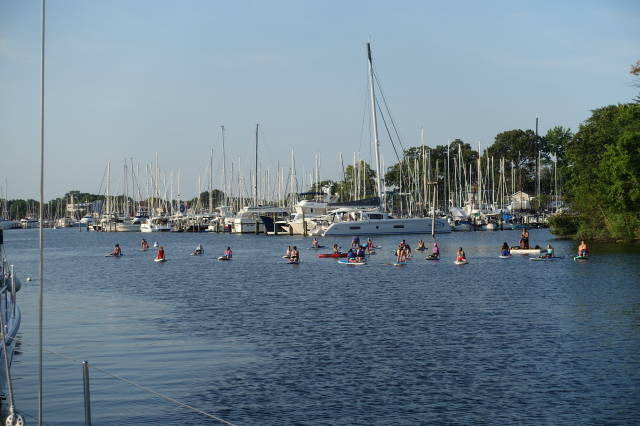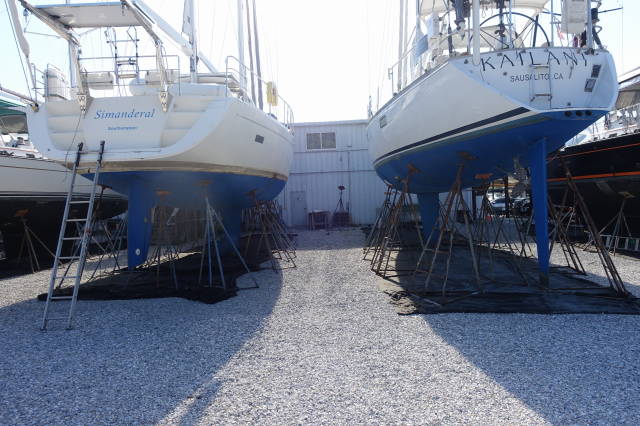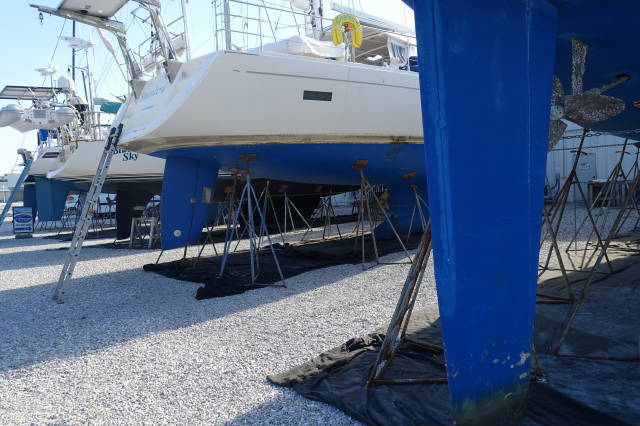
Annapolis has got to be the stand-up paddle-board capital of the world. We have been treated to a guitar performer with an amp on a small float singing to a yoga class in front of the boat a few times a day!
In other news, the marina we are in is has a boat yard so we see lots of interesting boats walking to the road and back. Today we were surprised to see a Deerfoot 63 parked next to an Amel 55 (57 ft), both considered purpose built high end cruising boats separated by 35 years. The 1980 Deerfoot was Steve Dashew’s second iteration of his design philosophy that was refined in the 90s with the Sundeer and Beowulf series. The 55 was one of the first Amel designs from Berret-Racoupeau, the Beneteau and Fountaine Pajot design team. All sailboat designs are some sort tradeoff. The Deerfoot emphasized comfortable sailing in all points of sail in a variety of conditions. The skinny beam allows the boat to heel symmetrically so the stern does not shove out and burry the bow allowing more control downwind with less pounding upwind. The higher efficiency hull allows for a smaller rig easily handled by a couple. The Amel is designed for comfort at anchor and the dock and effortless sailing with most all the sail controls automated with push buttons. There is absolutely nothing wrong with push button furlers and sheets, but you can get those functions in a new Hallberg-Rassey or Oyster with more sea kindly design. When we were researching boats to cruise a few years ago we noticed the Amel 55 is less of a blue water boat than its predecessor the Super Maramu. Its ballast/displacement ratio is 27% compared to the Super Maramu’s 34%. 27% is getting close to coastal cruising territory. The trend of wide aft beam boats is a positive for form stability, but there are plenty of these newer boat models with B/D ratios in the 30’s. The 55’s angle of vanishing stability is not published because it is probably pretty low as well, meaning it would be slower to recover from a knockdown than its predecessor. And why does the 55’s hull to deck joint look like one found on current model Beneteau? Our take on the design philosophy change is that the founder Henri Amel passed away and left the company to the employees, the employees wanted to sell more boats, so the production boat experts were brought in to lower construction costs and adjust the target market from world cruisers to the Mediterranean centric luxury market to increase volume. From all accounts Amel has a full order book so they made a good call. You have got to give customers what they want unless you are a visionary type like Steve Dashew, Henri Amel, or Elon Musk or Steve Jobs for that matter – then the designer creates the market.


